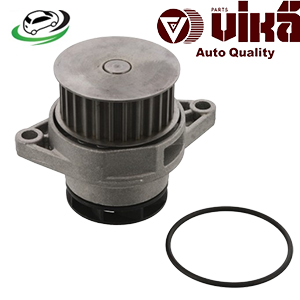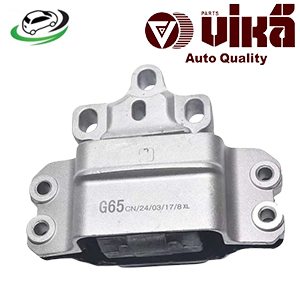-25%
Get Automatic Transmission Input Shaft Seal VW Beetle 1.8T Gen3/VW Beetle 2.5L/VW CC 2.0T/VW Golf V/VI/Jetta V/VI/New Beetle/Passat B6/B7 09K321243
The automatic transmission input shaft seal is a crucial component in a vehicle’s transmission system. It serves to prevent transmission fluid from leaking out of the transmission housing, ensuring that the internal components of the transmission remain properly lubricated and function effectively. This guide explores the functionality, types, symptoms of failure, and maintenance of the automatic transmission input shaft seal.
Functionality of the Automatic Transmission Input Shaft Seal
The primary function of the input shaft seal is to maintain a tight seal around the input shaft of the transmission, preventing transmission fluid from leaking out. This is vital for several reasons:
- Fluid Containment: The seal keeps the transmission fluid within the transmission, ensuring that it remains properly lubricated.
- Protection: By preventing fluid leaks, the seal protects the transmission components from wear and damage caused by insufficient lubrication.
- Efficiency: Proper fluid levels are essential for the transmission to operate smoothly and efficiently, providing the necessary hydraulic pressure for gear shifts.
- Cleanliness: A tight seal prevents dirt, debris, and contaminants from entering the transmission, which could cause damage or affect performance.
Components and Materials
The input shaft seal typically consists of the following components:
- Sealing Lip: The main part of the seal that makes contact with the input shaft, ensuring a tight seal.
- Metal Case: A rigid outer structure that holds the sealing lip in place and provides structural integrity.
- Garter Spring: A spring that applies constant pressure on the sealing lip, ensuring it maintains contact with the input shaft.
Materials commonly used in input shaft seals include:
- Nitrile Rubber (NBR): A popular choice due to its good balance of cost, durability, and resistance to oil and heat.
- Fluoroelastomer (FKM/Viton): Used in high-performance applications due to its superior resistance to heat, chemicals, and wear.
- Polytetrafluoroethylene (PTFE): Known for its low friction and excellent chemical resistance, used in applications requiring high durability.
Symptoms of a Failing Input Shaft Seal
Recognizing the signs of a failing input shaft seal is crucial for timely maintenance and repair:
- Transmission Fluid Leaks: One of the most obvious signs is fluid leaking from the front of the transmission. This can appear as puddles under the vehicle or visible drips.
- Low Transmission Fluid Levels: If the fluid levels drop significantly without an apparent reason, it may be due to a leaking input shaft seal.
- Burning Smell: Low transmission fluid can cause the transmission to overheat, leading to a burning smell.
- Transmission Slipping: Insufficient fluid can cause the transmission to slip, leading to erratic gear shifts or difficulty in shifting gears.
- Unusual Noises: Whining or grinding noises from the transmission can indicate that it is not properly lubricated, possibly due to a leaking seal.
Maintenance and Replacement
Maintaining the input shaft seal involves regular inspections and timely replacements to ensure the transmission’s optimal performance and longevity.
- Regular Inspections: Periodically check for signs of fluid leaks around the transmission area, particularly near the input shaft.
- Monitor Fluid Levels: Keep an eye on transmission fluid levels and top up as necessary. A sudden drop in fluid levels may indicate a leak.
- Listen for Noises: Pay attention to any unusual noises coming from the transmission, as these can be early signs of seal failure.
Replacement Process
Replacing an automatic transmission input shaft seal is a complex process that typically involves the following steps:
- Prepare the Vehicle: Park the vehicle on a level surface and lift it securely using a jack and jack stands. Disconnect the battery to prevent any electrical issues.
- Drain Transmission Fluid: Drain the transmission fluid to prevent spills when the transmission is removed.
- Remove the Transmission: Disconnect the transmission from the engine. This usually involves removing the drive shaft, disconnecting the transmission cooler lines, and unbolting the transmission from the engine.
- Access the Input Shaft Seal: Once the transmission is removed, the input shaft seal will be accessible. Carefully remove the old seal using a seal puller or similar tool.
- Install the New Seal: Clean the area around the input shaft and carefully install the new seal, ensuring it is seated properly.
- Reinstall the Transmission: Reinstall the transmission, reconnecting all the components in the reverse order of removal.
- Refill Transmission Fluid: Refill the transmission with the appropriate type and amount of transmission fluid.
- Test the Vehicle: Start the vehicle and check for leaks. Take the vehicle for a test drive to ensure the transmission operates smoothly.
Importance of Quality Seals
Using high-quality input shaft seals is essential for several reasons:
- Durability: High-quality materials ensure the seal can withstand the stresses of daily driving and the harsh conditions within the transmission.
- Performance: A quality seal maintains the proper level of fluid within the transmission, ensuring smooth and efficient operation.
- Reliability: Reliable seals prevent leaks, reducing the risk of transmission damage and the need for costly repairs.
- Cost-Effectiveness: Investing in a high-quality seal can prevent frequent replacements and associated labor costs.
Follow us on Facebook for more parts.



